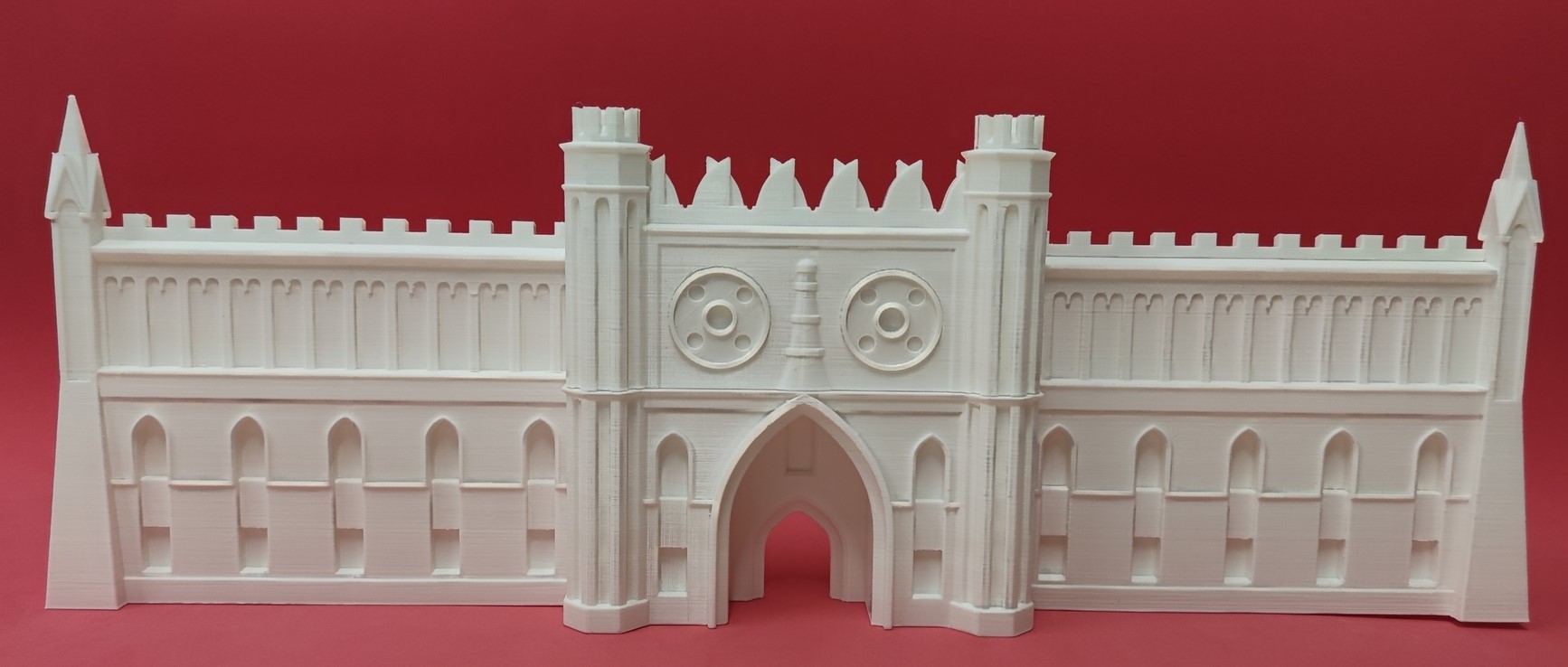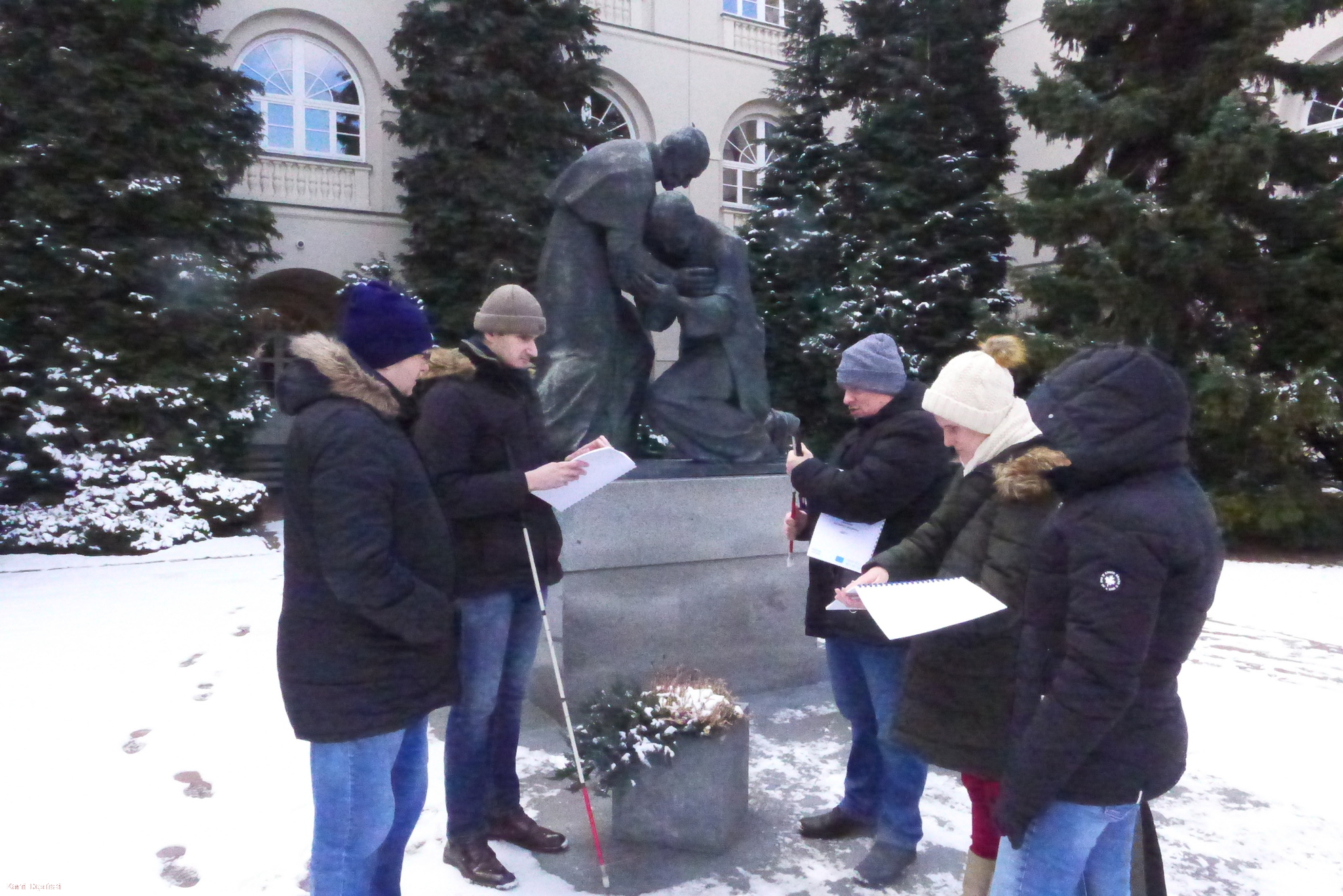Acronym
TouchingThePast
NUMBER
PBU2/0791/18
Project type
Micro-project
STATUS
Completed
THEMATIC OBJECTIVE
HERITAGE
PRIORITY
1.1 Promotion of local culture and history
PARTNERSHIP
PL-UA
LEAD BENEFICIARY
The John Paul II Catholic University of Lublin (Lubelskie Voivodeship, Poland)
BENEFICIARY
Vasyl Stefanyk Precarpathian National University (Ivano-Frankivsk Oblast, Ukraine)


Both Poland and Ukraine can boast about their rich cultural heritage, however many museums, art galleries, architecture, and historical monuments are not accessible to persons with visual impairments. Modern technology offers now the possibility to offer art to persons with blindness or low vision. Lublin already has experience in this matter - samples of adaptations of exhibits that can be manually explored at 4 museums in the city receive highly positive feedback. Museums from the other side of the border, are not prepared for such persons.
The TouchingThePast project, give a chance not only to expand the range of exhibits adapted for persons with a visual impairment in Lublin but also to introduce the idea in the Ivano-Frankivsk museums. Design and production of accessible adaptations of exhibits for museums in both cities are only a part of the project because the preparation of tactile adaptations requires special knowledge and technology. Therefore, a purchase of specialised equipment, trainings for museum and art gallery staff, guides of city tours and for blind visitors will be organized. Persons with a visual impairment from high-schools, universities, and local organizations will also participate in the tours of historic sites in Lublin and Ivano-Frankivsk. The aim of such workshops is to ensure that they are capable of meaningful exploration of exhibits and tactile graphics, what they could share with other blind and partially sighted persons.
The project will enable persons with visual impairments in both cities to participate more in cultural life. Now they will be able to visit museums and have the access to works of art. Moreover, the project offers a chance to start long term cooperation between cultural institutions in the area by joint events, exchange visits raising the awareness of the challenges faced by such persons on both sides of the Ukrainian-Polish border.
![]()
EQUIPMENT
The John Paul II Catholic University of Lublin purchased software and specialised equipment which made it possible to prepare adaptations of exhibits accessible to visually impaired people. All training organised as part of the project was carried out with the use of the purchased equipment. The equipment was also used for production of accessible adaptations of selected exhibits.
The project partners purchased, among others:
![]()
DESIGN AND PRODUCTION OF ACCESSIBLE ADAPTATIONS
Adaptations include: tactile drawings, adaptations of selected images (with tactile lines and textures highlighting key passages), 3D printed models, Braille and audio description.

The adaptations can be viewed on The John Paul II Catholic University of Lublin's website:
![]()
TRAINING FOR UNIVERSITY STAFF, MUSEUMS AND TOURIST GUIDES
The project partners organised three editions of training courses:
Each course included four workshops:
![]()
TRAINING FOR VISUALLY IMPAIRED PERSONS
Both project partners, with active participation of museum representatives, offered trainings to visually impaired pupils and students. The training sessions in Lublin and Ivano-Frankivsk focused on improving participants' skills in understanding the relationship between three-dimensional objects created for them and their two-dimensional representations as tactile graphics. Acquiring such basic skills is crucial for blind or visually impaired people to interact in a meaningful way with drawings or images. Tactile drawings can be successfully used as accessible adaptations of images.
![]()
PUBLICATIONS
Project partners jointly prepared two separate guidebooks (one for persons with total blindness and one for visitors with low vision), presenting the sights of Lublin and Ivano-Frankivsk. The guides are used by blind people or those who know Braille. The guidebooks are available at tourist information points employing city guides. Each illustration is accompanied by a description in Braille and large print.
They include information about the stages of preparation of adaptation of exhibits and photographs of sample adaptations. They were distributed to organisations involved in supporting education and access to culture for persons with visual impairments.
![]()
GUIDED TOURS IN LUBLIN AND IVANO-FRANKIVSK

During the excursions, visually impaired persons had a good opportunity, sometimes for the first time in their lives, to get to know various objects (e.g. sculptures, historical sites) and museum exhibits. They explored them using Braille guidebooks prepared as part of the project and by exploring manually various objects, which were described by guides and caregivers of the blind and visually impaired.
Was this page useful?


